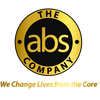The Core Connection: Debunking Common Core Training Myths
By Dr. Joseph Gagnon
Core training is a key focus in fitness routines, with countless exercises and programs dedicated to building a strong midsection. However, misinformation has led to widespread myths about what actually works, potentially holding you back from achieving the results you’re aiming for. In this blog, we'll debunk six common core training myths and provide the facts you need for a more effective workout, whether you’re a gym owner, fitness trainer, or fitness enthusiast.
Myth 1: Crunches Are the Best Way to Build a Strong Core
Crunches are often considered the go-to exercise for core strength, but they primarily target the rectus abdominis (the "six-pack" muscles). However, the core encompasses much more, including the transverse abdominis, obliques, lower back muscles, and others that play crucial roles in stabilizing your entire body.
The Facts: For a truly strong core, you need exercises that engage multiple muscles simultaneously. Movements like planks, bird-dogs, and leg raises challenge the core as a whole. If you’re looking for equipment to enhance these exercises, the Ab Solo by The Abs Company is perfect for integrating dynamic core work. It combines fun, function, and efficiency, offering a unique way to target the entire core in less time than traditional crunches.
Myth 2: Core Training Will Give You a Six-Pack
Many believe that performing endless core exercises will magically reveal a six-pack. However, visible abs are more about reducing overall body fat than solely doing core workouts. Abs can be strong and functional but remain hidden under a layer of fat.
The Facts: Core exercises strengthen muscles, but to reveal them, you’ll need to reduce body fat through a combination of a well-balanced diet, strength training, and cardiovascular workouts. For those managing a fitness center, incorporating equipment like the TireFlip 180® from The Abs Company can provide both a full-body and cardio workout, helping clients burn calories while building functional core strength.
Myth 3: You Should Train Your Core Every Day
It’s tempting to think that training your core every day is necessary to see results, especially since these muscles are activated in many daily movements. However, like any muscle group, the core needs recovery time to avoid overtraining and maximize strength gains.
The Facts: Aim to train your core three to five times a week, allowing rest days in between for recovery. Equipment like the Battle Rope ST® System can deliver a full-body workout, integrating core training with other movements, reducing the need for daily core sessions while still maximizing efficiency.
Myth 4: Core Training Is Just About the Abs
A common misconception is that core training is solely about the abs. However, the core includes a much broader muscle group—spanning the lower back, hips, glutes, and even the diaphragm.
The Facts: Effective core training involves all these muscles, promoting stability, posture, and overall strength. Exercises like deadlifts, glute bridges, and bird-dogs work the entire core, not just the abs. At The Abs Company, our Glute Coaster™ targets the glutes while engaging the core for a balanced workout that enhances lower body and midsection strength.
Myth 5: Core Training Won’t Help With Back Pain
There’s a misconception that core exercises can either worsen back pain or have little impact on improving it. In reality, a strong core can significantly alleviate and prevent back pain by supporting the spine and reducing strain on the lower back.
The Facts: Strengthening deep stabilizer muscles, like the transverse abdominis, improves posture and reduces the risk of injury. When working with clients who suffer from back pain, recommend low-impact exercises like planks or bird-dogs to build a strong, stable core without placing undue strain on the spine. Make sure to emphasize proper form and avoid exercises that exacerbate discomfort.
Myth 6: You Need Equipment for an Effective Core Workout
It’s easy to assume that fancy equipment is necessary to build a strong core, but some of the most effective core exercises require nothing more than body weight. While equipment can enhance a workout, it’s not essential for getting results.
The Facts: Planks, side planks, leg raises, and functional movements like squats engage the core without any equipment. However, if you’re looking to add variety and challenge to your workouts or your gym’s programming, The Abs Company offers products like the AbCoaster® PS500, which provides a more dynamic core workout than traditional floor exercises. These machines can add value to your gym’s offerings, attracting clients looking for effective, equipment-based solutions to core training.
Conclusion: Building a Strong Core—What Really Works
Debunking these core training myths helps you make informed decisions about your fitness routine. A strong, functional core requires a variety of exercises that target all the muscles of your midsection, sufficient recovery time, and attention to nutrition. Whether you're training at home or managing a fitness center, incorporating high-quality equipment from The Abs Company can make a world of difference in your core workouts.

